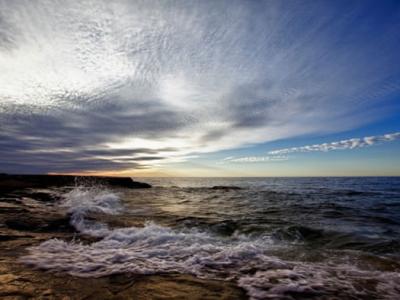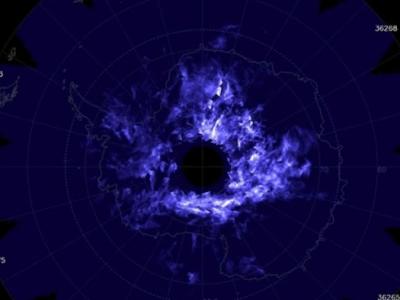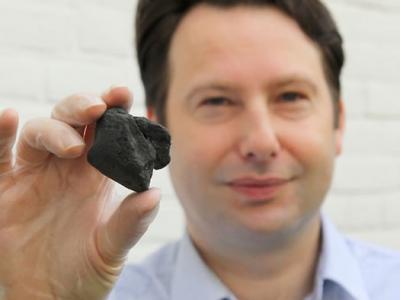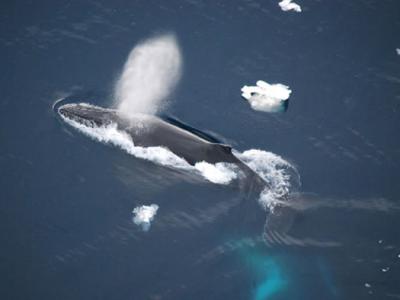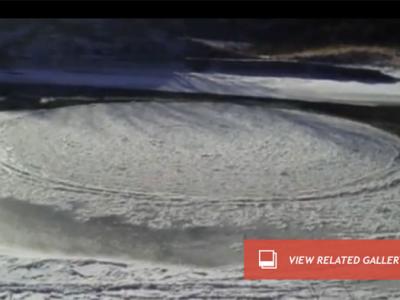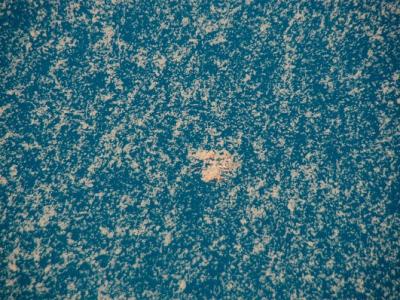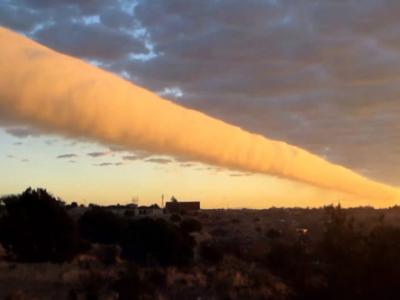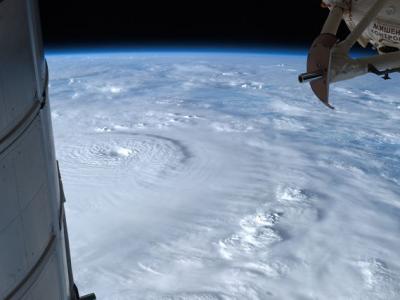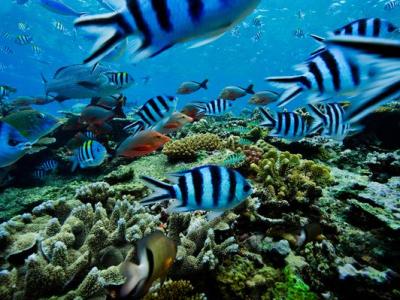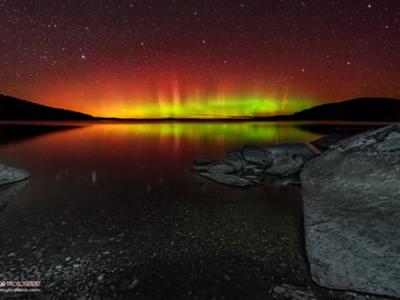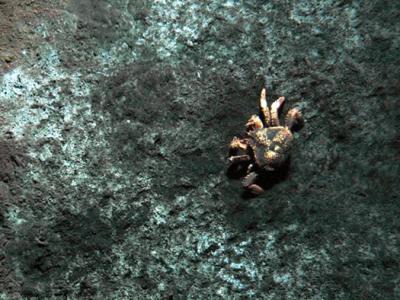Florida Wildfire Risk Grows After Light Storm Season
Lack of hurricane rain has shrunk Florida's Lake Okeechobee to record lows, as seen in this November 6, 2007, photo of a pumping station near the small town of Port Mayaca. The bright green land between the station and the lake is normally underwater.
Florida officials are now bracing for a devastating wildfire season as the state's dry season winds on and water reserves continue to dwindle.
AP Photo/Alan Diaz
Willie Drye
for National Geographic News
December 17, 2007
Floridians thankful for dodging major tropical storms the past two years may find that they have paid a heavy price: a severe drought that has left the state primed for an explosive wildfire season.
"It was an unusually dry summer," Florida Lieutenant Governor Jeff Kottkamp told National Geographic News.
"We're grateful that we were not hit by a hurricane, but a few slow-moving tropical storms with a lot of rain would have been nice."
The drought has caused giant Lake Okeechobee to recede so much that in some places grass that is normally underwater has dried out and caught fire, said Ronda Sutphen, fire prevention officer for Florida's Division of Forestry.
The severe wildfire threat will last until at least the summer of 2008, she added.
"The conditions are ripe for us to have a very bad fire season," Sutphen said.
Drought and Arson
Florida's subtropical climate averages about 54 inches (137 centimeters) of rain a year—most of it during the summer—said state meteorologist Ben Nelson in Tallahassee.
Tropical weather systems provide as much as 10 percent of that annual total.
Florida was battered by two stormy summers in 2004 and 2005, but tropical storms have mostly avoided the state since then.
During these relatively quiet summers, the state received only about 43 inches (109 centimeters) of rain in 2006, and only about 42 inches (107 centimeters) this year, Nelson said. Those totals are among the lowest since 1895.
Because the state receives little rainfall from November to April, wildfires often spring up then, burning grasses and forests.
Under normal conditions, about 200,000 acres (81,000 hectares) burn every year, Sutphen, the fire prevention officer, said. During the very dry conditions last year, however, more than 500,000 acres (200,000 hectares) went up in smoke.
More than 316,000 acres (128,000 hectares) have burned so far this year, noted Kottkamp, the lieutenant governor.
Some of the fires are started by natural causes such as lightning strikes. But the vast majority—as much as 80 percent—is caused by human activity, Sutphen added.
Causes range from children playing with matches to sparks from off-road vehicles to arson, she said.
Tourism Dried Out
The last time Florida had a comparable wildfire outbreak was 1998, when the state went about two months without rainfall during the spring and summer.
Smoke from wildfires was so bad that year that the annual Daytona 400 stock car race was postponed and Walt Disney World in Orlando closed for a day.
David Halstead of the Florida Division of Emergency Management said the 1998 wildfire outbreak burned away a sizable chunk of the state's tourism income.
The decision to postpone the Daytona 400 wiped out about $40 million, he pointed out.
Crisis Conditions
Nelson, the state meteorologist, said the extremely dry conditions could continue well into 2008, especially if a weather phenomenon known as La Niña continues over the Pacific Ocean.
When a La Niña occurs, water temperature in the equatorial Pacific is cooler than usual, which can affect rainfall and lead to drought in the southeastern and southwestern U.S.
The current La Niña formed in early 2006. Nelson said La Niña conditions can last two or three years.
Halstead said Florida is "close to getting into a water crisis situation."
"By the end of the next hurricane season, if we've not received significant tropical moisture, we'll be dealing with things that we've not typically dealt with," Halstead said.
The drought is going to make it more difficult to fight wildfires that break out this winter because firefighters often draw water from lakes and reservoirs, and some of those sources will be too low to use, he said.
Lieutenant Governor Kottkamp and other Florida officials are planning a special conference in January to discuss the threat and make plans for fighting the inevitable wildfires.
Firefighters from other drought-stricken states are expected to attend the conference, he added.
"We're in uncharted territory now," Halstead said. "All we can do is plan for it and try to protect our citizens, cut back on water uses, and do what's prudent."
Willie Drye is the author of Storm of the Century: The Labor Day Hurricane of 1935, published by National Geographic.


